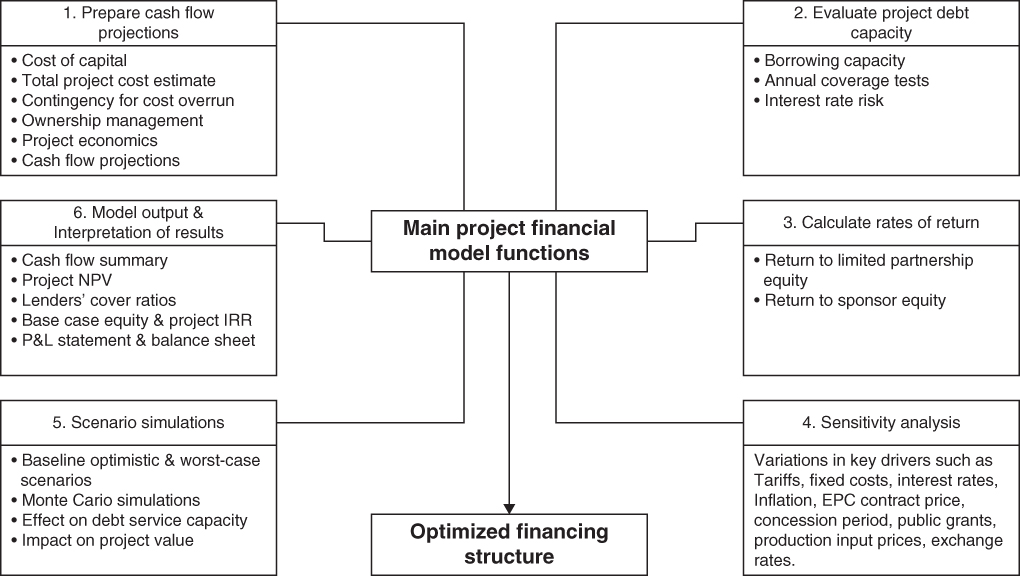CHAPTER 14Project Financial ModelAssessing and Testing Financeability
A project financial model is a representation of important qualitative and quantitative information. It contains assumptions, project schedules and operational and financial relationships in mathematical, deterministic models such as Excel spreadsheets. Stochastic project financial models are used in projects of prevalent uncertainties and because of their complexities they are only used in large project financings. A financial model calculates relationships and simulates the effects of forecast variables. Its output helps to plan and provides guide financial analysis and decision making in all phases of a project. As such, it is a key tool in the evaluation of the feasibility study results and in project development phase decisions. A summary of the main purposes served by a project financial model is displayed in Figure 14.1.

Figure 14.1 Purposes of the Project Financial Model
Source: Adapted from Finnerty (2013).
A project financial model is built right at the start of the project assessment stage and it is continuously expanded, updated, and improved as more information, data, analyses, and evaluations are completed. Because of its complexity and maintenance requirements, the project financial model is usually jointly developed by the sponsor‐project team and the financial advisor with input from the lead‐arranger ...
Get Project Finance for Business Development now with the O’Reilly learning platform.
O’Reilly members experience books, live events, courses curated by job role, and more from O’Reilly and nearly 200 top publishers.

